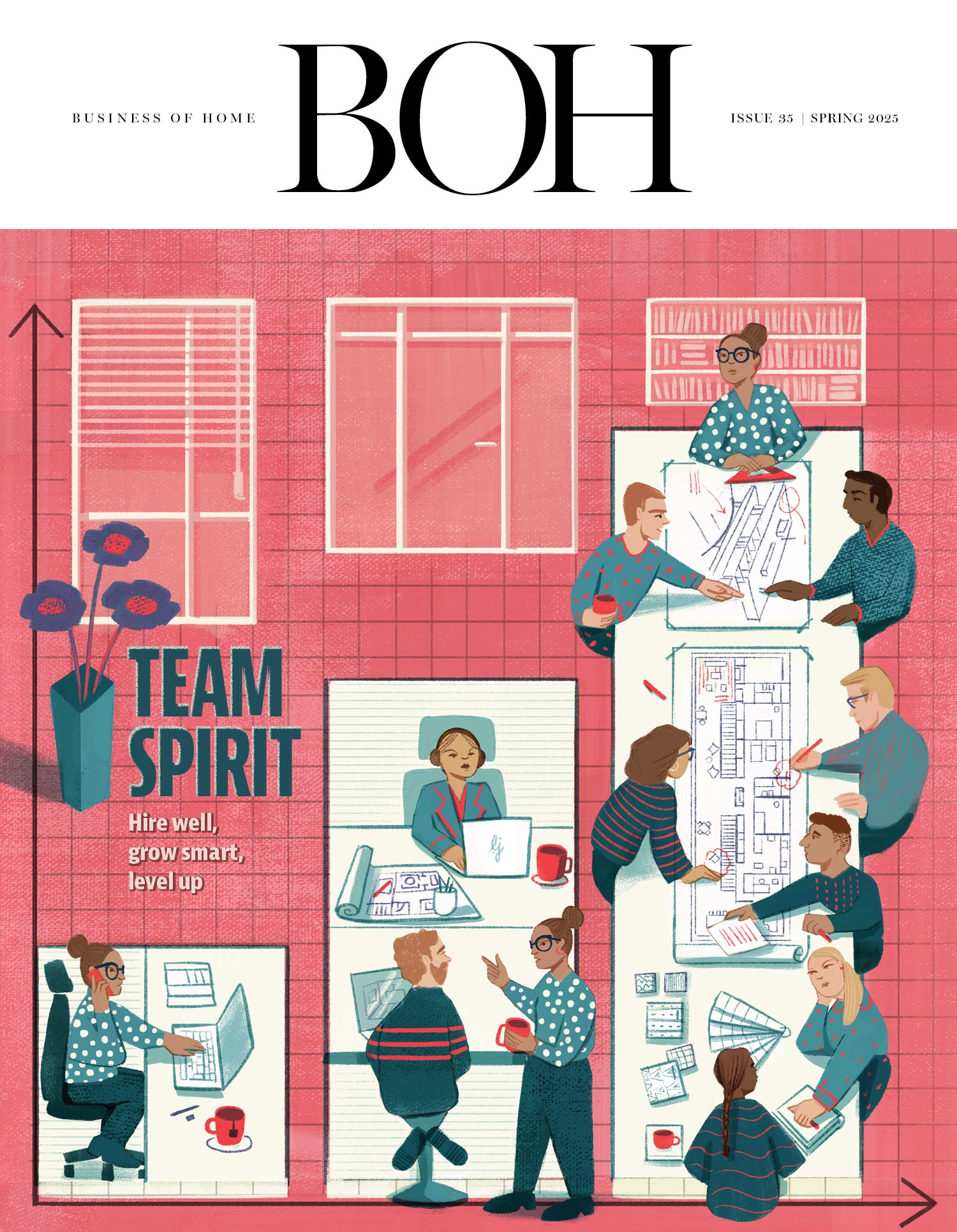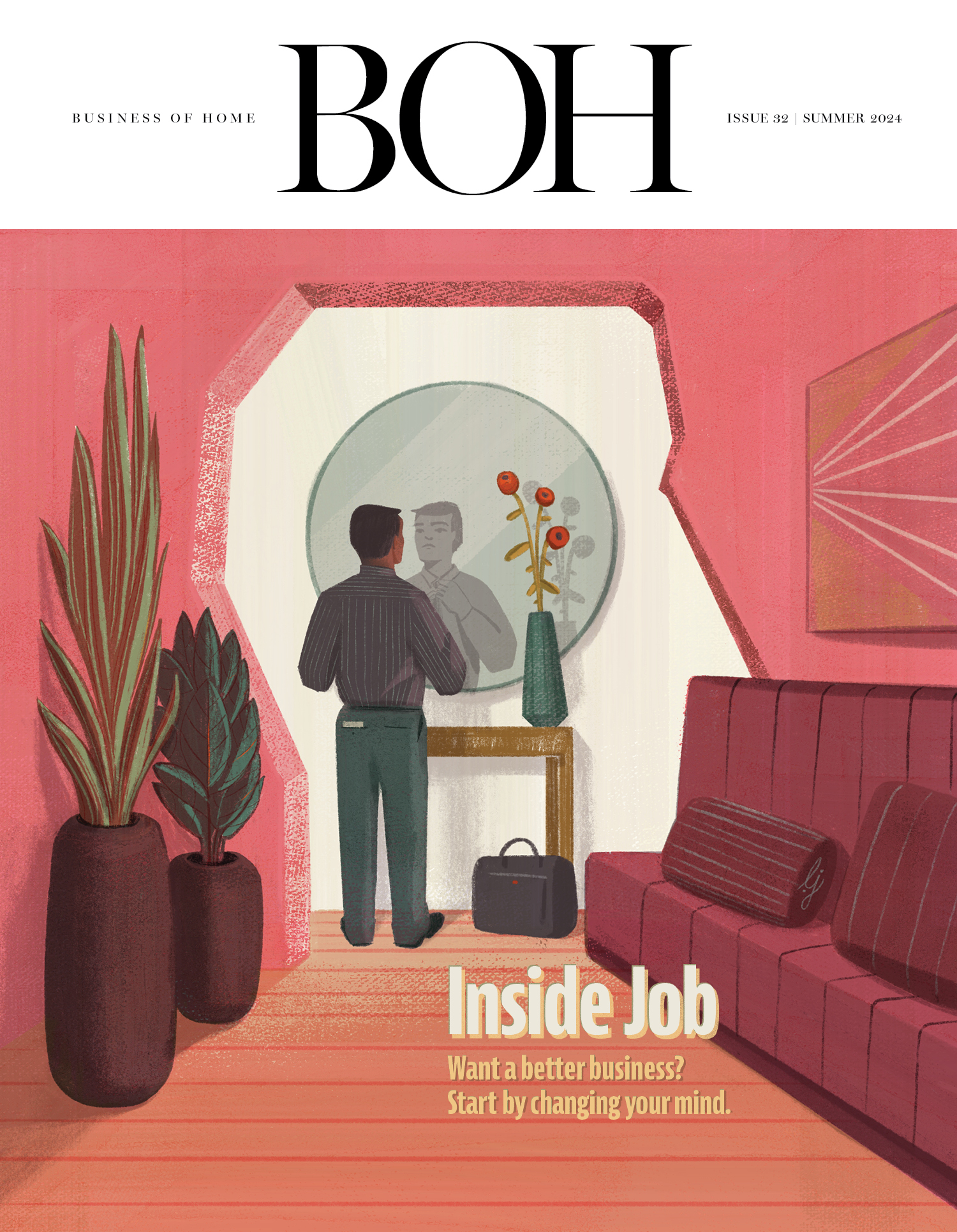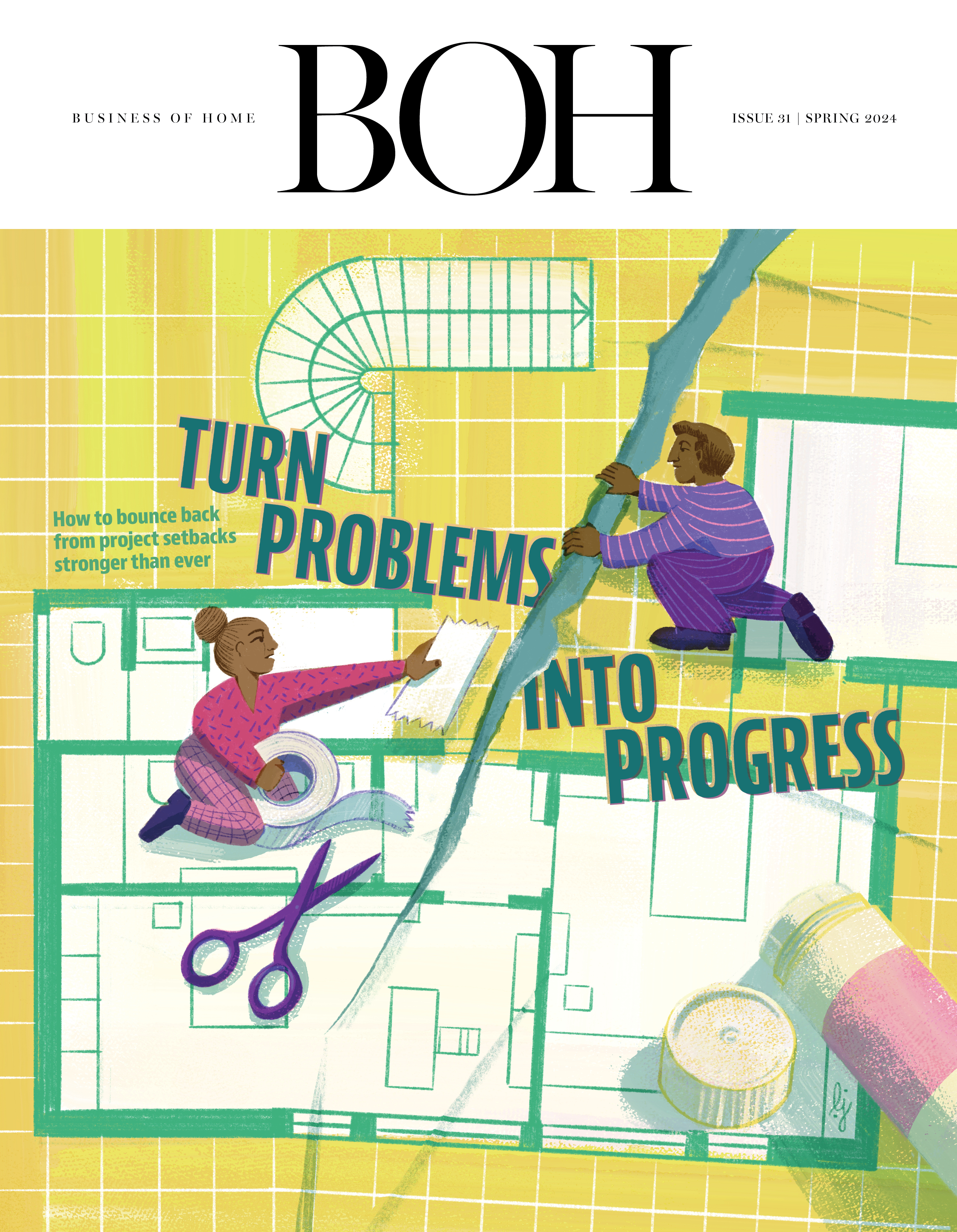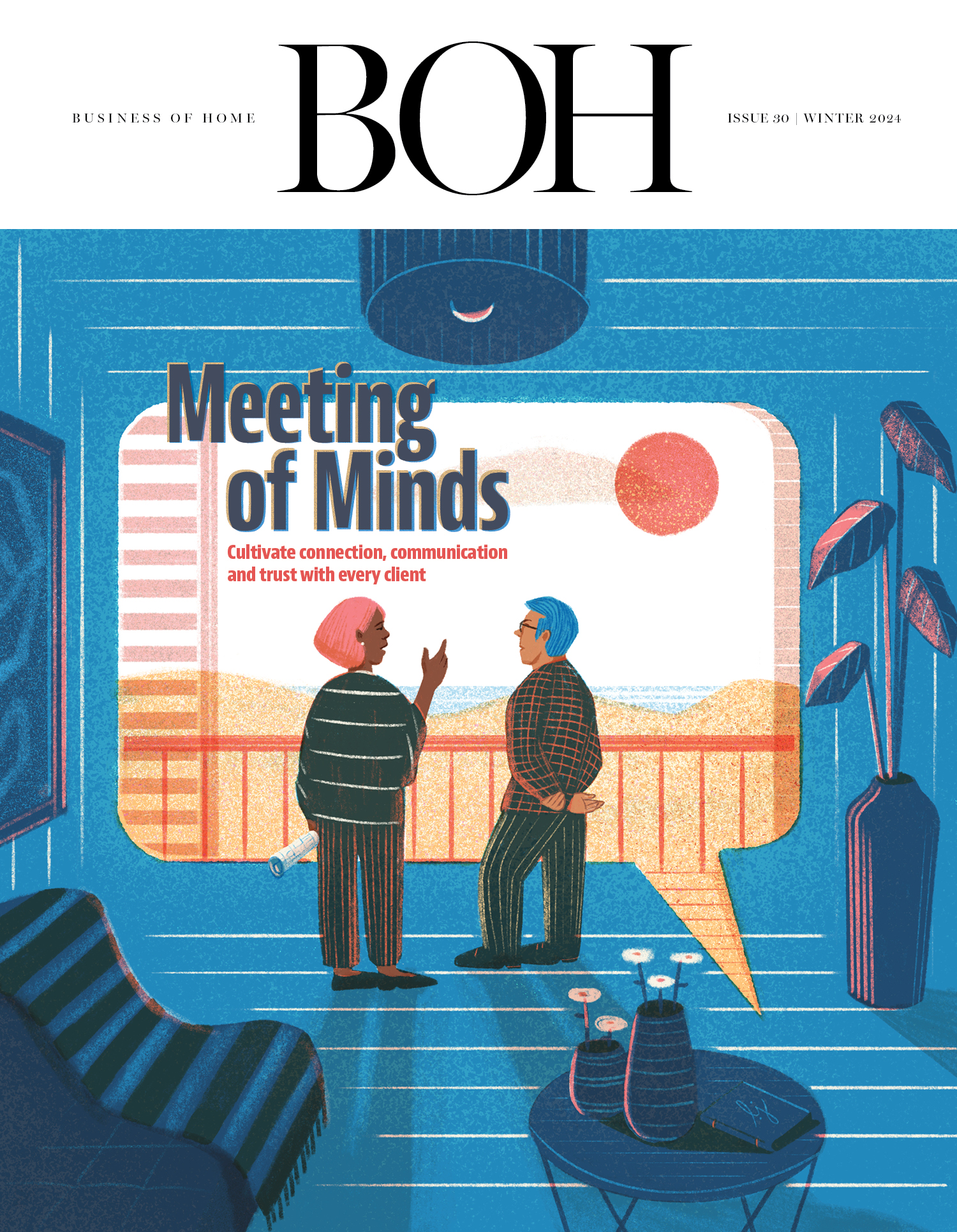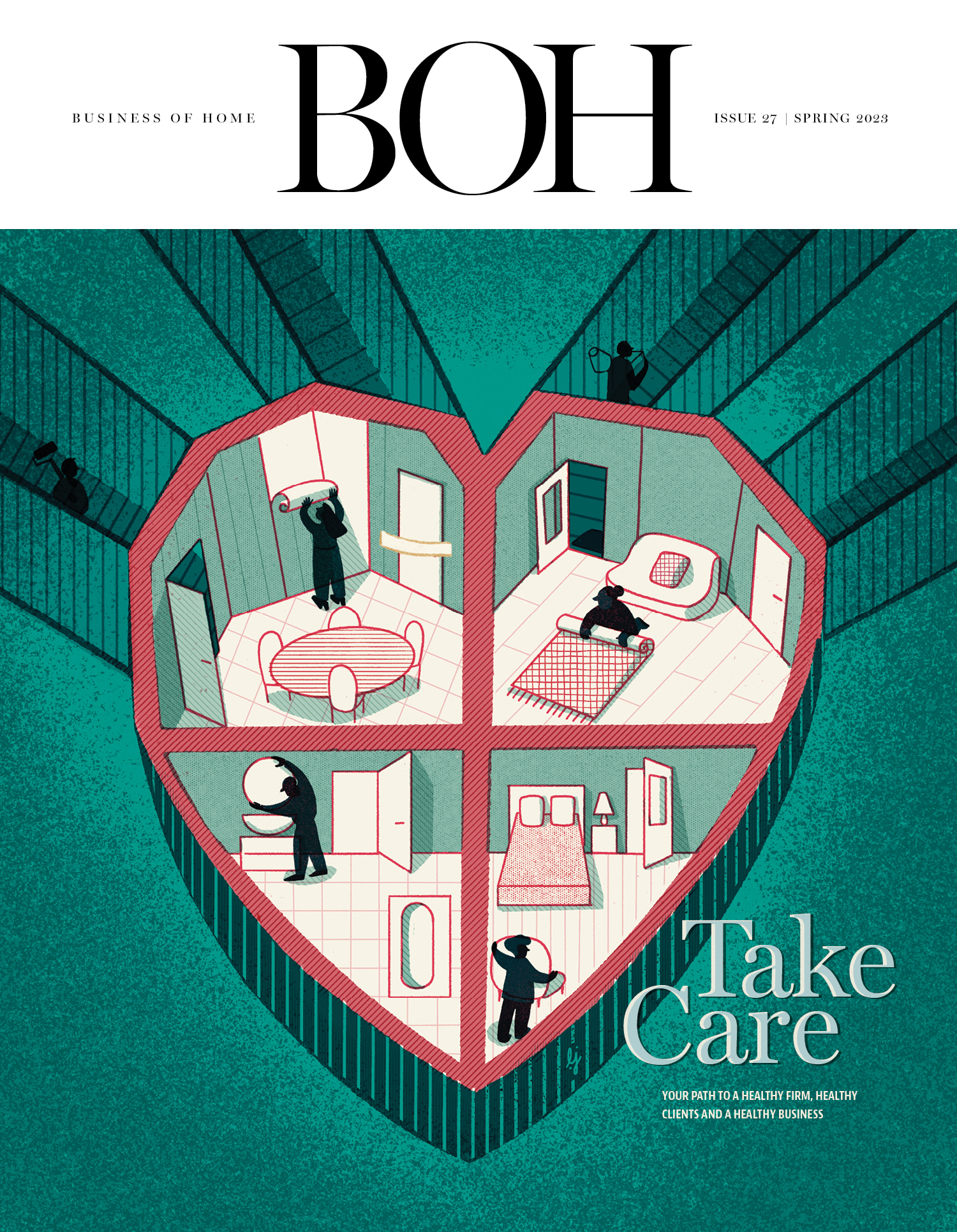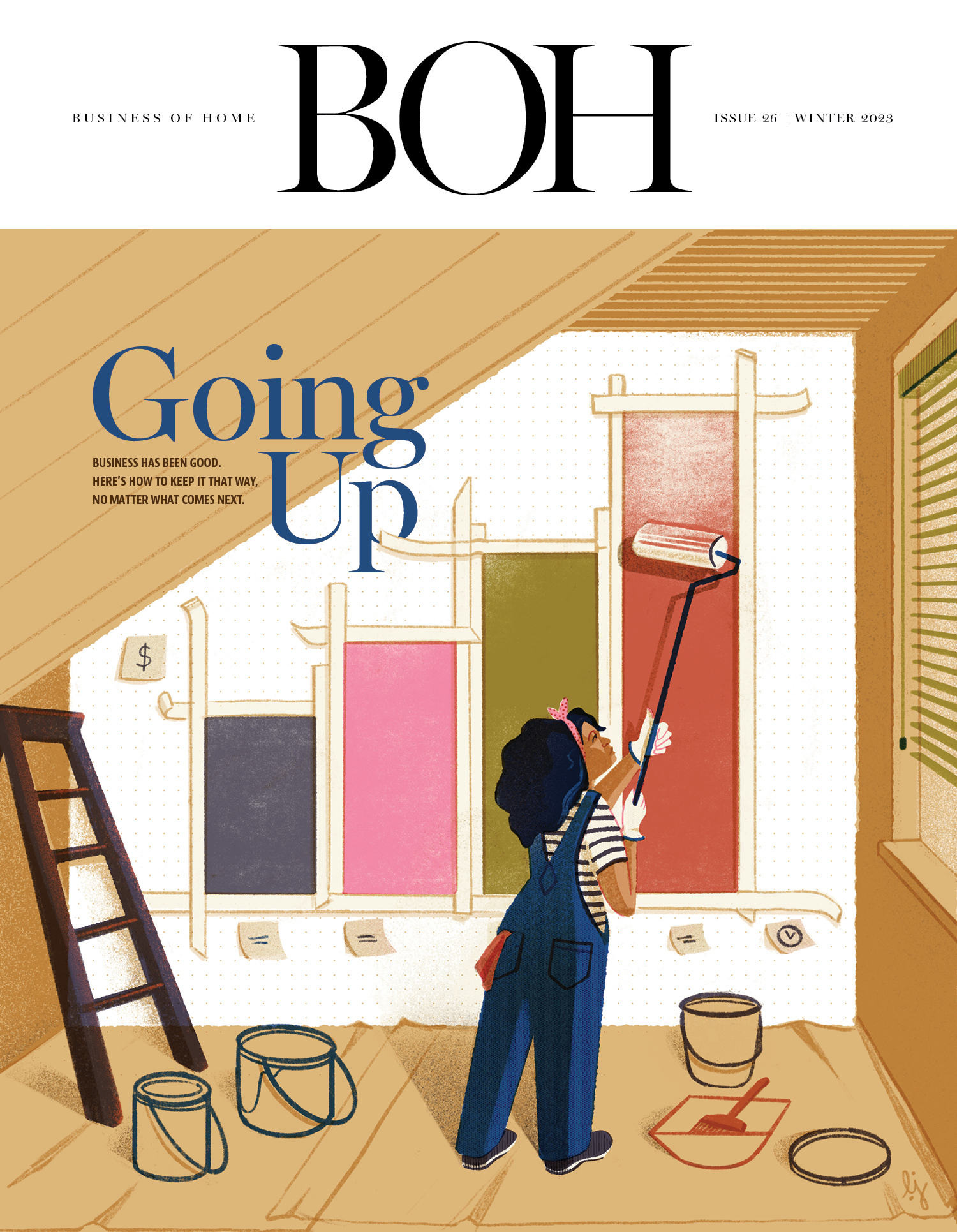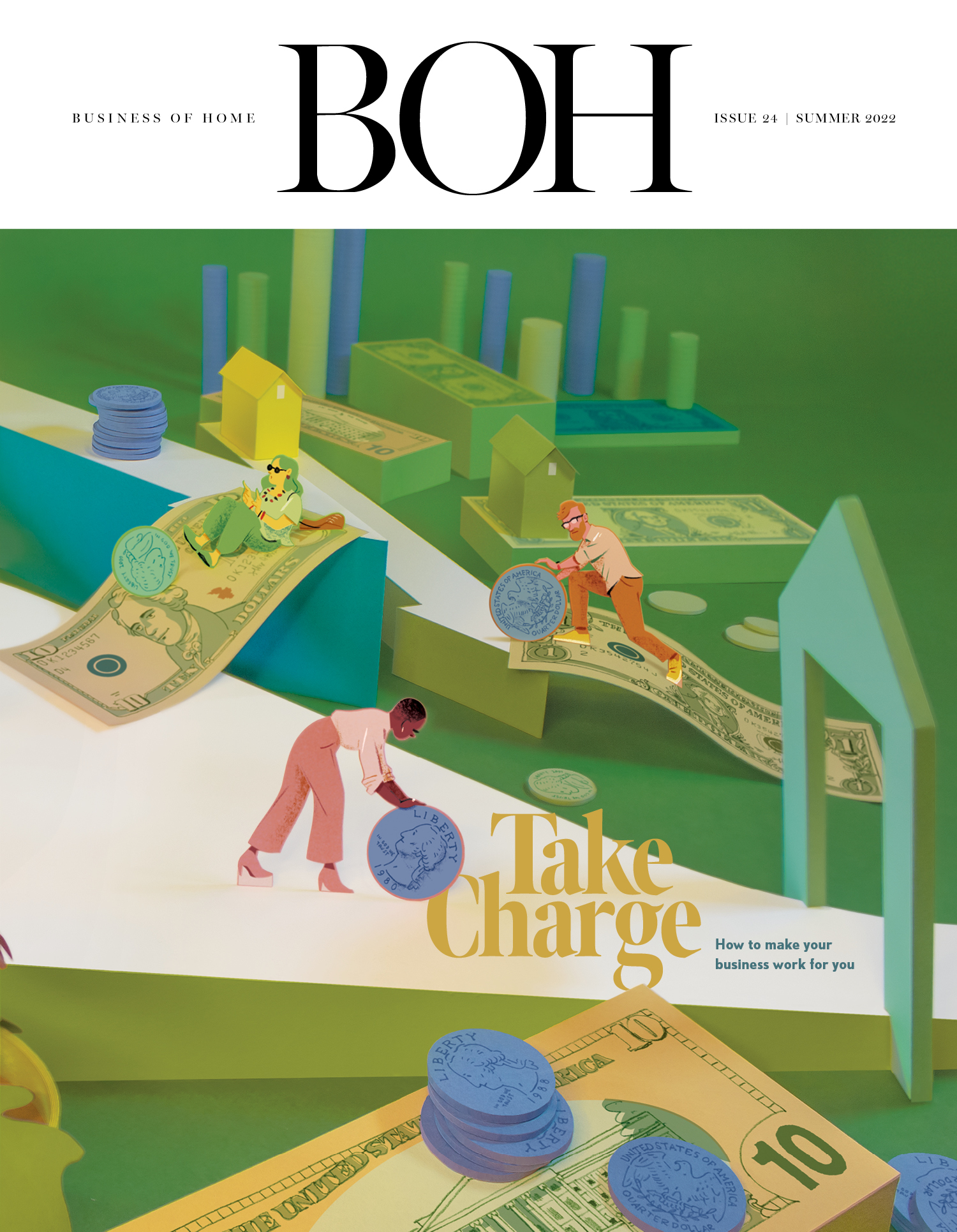Dear Sean,
I’m planning on taking two weeks off this summer to spend time with my family. I’ve never unplugged completely from my business before—and while I think I have the team prepared to navigate in my absence, I’m not totally sure. In the run-up to this vacation, I have a few questions: What do I tell my team to consider an “emergency” if they need to reach out to me? And do I need to let my clients know that I won’t be available? I want to protect my peace—but I know I need to look out for my business too!
Out of Office
Dear Out of Office,
Before we jump into how to take time off effectively, a minute for what taking time away from your design business really means.
I see taking the time to invest in yourself—whether a vacation, an educational endeavor or just being with your family—as incredibly meaningful. The reason is not woo-woo; it is because the single biggest asset in your creative business is between your ears. If you are not nourishing that asset, it is like leaving your laptop near an open window in a rainstorm. It might keep working, but not for long. Inspiration comes in the quiet moments when you allow the noise of the everyday to recede so the beauty around you can rise.
With the idea that time away is an investment, the real question becomes how to reap the highest return on that investment. First, there is never an emergency if there is planning. And planning requires your team to own the three Ws for each of your projects: Where were you? Where are you? Where are you going?
Next, clients need to know your firm is bigger than you. While you might be the one responsible for what I call creative design (i.e., an antique mirror goes there), your team is often there to fill in the rest (i.e., the size, shape and cost of the actual antique mirror to be selected and the logistics of getting it). This much should be made clear to clients from the start of any project, and certainly before you take time away this summer.
We are talking about two weeks, not two months. Your team should present to you how they intend to communicate the three Ws to clients with defined deliverables and schedules. You should role-play the client here and have them demonstrate to you that they have the ability to own both the responsibility and authority for what there is to do while you are gone. Let it be an opportunity for you to see what they plan and gauge their ability to execute on their vision. Perhaps it will build confidence in everyone so that it can become the new normal instead of the vacation aberration. Nature abhors a vacuum, and those who choose to step into the gap (even if only for two weeks) will reap their own reward. In other words, the dynamic should be less about “do what you are told” and far more “tell me what you are going to do.”
As for clients, let us remind them of your two promises—to only do your best work in the way your firm does it and to stake your reputation on all that you do. Simply, your clients want you to be at your best and to make sure everyone around you is striving to do the same. It is up to you to educate clients on the idea that their project is a team sport, and overtaxing the star is a sure way to ensure defeat. The roles that others play in the project are critical universally, and especially during your time away. Of course, creative design is unleverageable (i.e., only you can do it), so no one else will be undertaking that particular work, meaning there will be a time buffer upon your return to address creative work that is yet to be accomplished.
Simply, your time away is to everyone’s benefit, and you need to build it into the fabric of your design business without apology or compromise. The old trope is that no one will do the work like you would. To which I would say, Why would you ever want them to?
The thing about being a martyr to your business is that you are only a martyr when you are dead. Yet you are hired specifically to breathe life into the way your clients perceive their world. So embrace the grace of rest so that the promises your business makes can be kept by voices other than yours. Your talent is bigger than you—as is your business. Enjoy your time away.
____________
Sean Low is the go-to business coach for interior designers. His clients have included Nate Berkus, Sawyer Berson, Vicente Wolf, Barry Dixon, Kevin Isbell and McGrath II. Low earned his law degree from the University of Pennsylvania, and as founder-president of The Business of Being Creative, he has long consulted for design businesses. In his Business Advice column for BOH, he answers designers’ most pressing questions. Have a dilemma? Send us an email—and don’t worry, we can keep your details anonymous.



